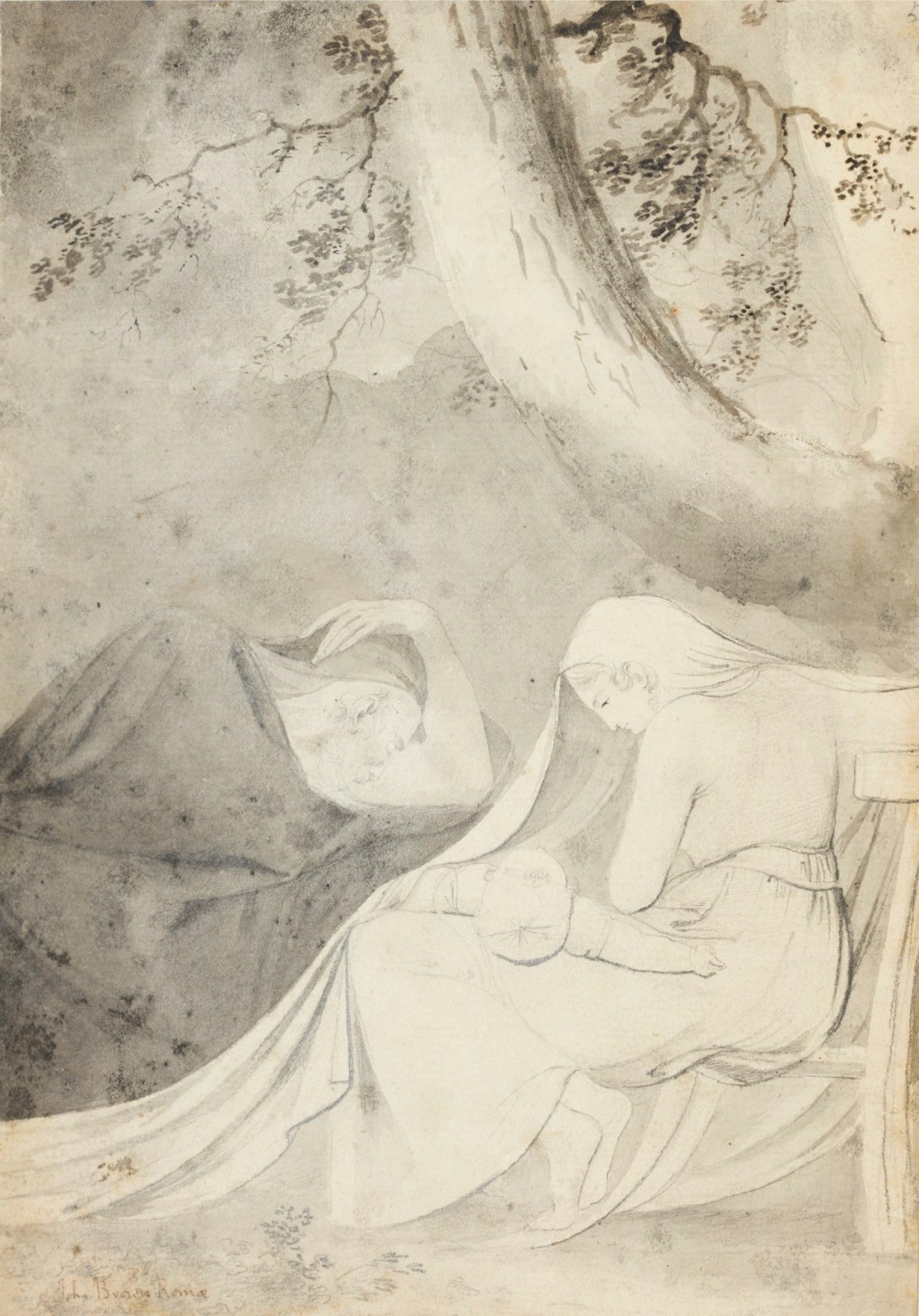
John Brown, The Holy Family, between 1769-1780.
Pen and ink and wash on cream laid paper. 254 mm x 180 mm. © Photo: Royal Academy of Arts, London.
This image is not available to download. To licence this image for commercial purposes, contact our Picture Library at picturelibrary@royalacademy.org.uk
The Holy Family, between 1769-1780
John Brown (1749 - 1787)
RA Collection: Art
John Brown, a draughtsman and printmaker from Edinburgh, was well-known as a portraitist. However, while living in Rome he also produced small-scale drawings of antiquities, landscapes and genre scenes, often in pen and wash.
The style of this drawing recalls that of Henry Fuseli, who was a friend of Brown's. It is published in D and F. Irwin's book Scottish Painters at Home and Abroad 1700-1900 (see refs) as 'a skilfully illustrated design, and very close in mood to drawings of Christian themes thirty years later by John Flaxman...The Madonna, seen in profile, might have been suggested by an antique sculpture of a seated Cleopatra that he drew in his Rome sketchbook (V&A), as the pose, drapery and chair have much in common'.
According to Peter Tomory, this drawing may have belonged to Henry Fuseli and was later acquired by Sir Thomas Lawrence. Tomory argues that Fuseli borrowed the figure of Joseph for his composition 'The Appearance of Christ at Emmaus' (1792, Mellon Collection).
This work comes from one of sixteen volumes of Royal Academy Annual Exhibition catalogues that were collected and extra-illustrated by the lawyer and antiquarian Edward Basil Jupp F.S.A. (1812 - 1877). The catalogues span the period from the first annual exhibition in 1769 up to 1875. Jupp added drawings, prints, letters and autographs by, or referring to, Academicians and other exhibitors at the Academy's annual exhibition.
E.B. Jupp was a solicitor who married Eliza Kay, daughter of the architect William Porden Kay. He was a Fellow of the Society of Antiquaries and a clerk of the Carpenters' Company, of which he published a history. Jupp amassed a large collection of paintings by British and Dutch artists, drawings, prints, books and porcelain most of which was sold after his death, at Christie's in February 1878.
Many of the drawings in Jupp's Royal Academy extra-illustrated volumes were bought from art sales during the 1860s. He was also acquainted with a number of contemporary artists and several drawings in the later volumes (along with many of the letters and autographs) were sent from the artists themselves.
Object details
254 mm x 180 mm
Start exploring the RA Collection
- Explore art works, paint-smeared palettes, scribbled letters and more...
- Artists and architects have run the RA for 250 years.
Our Collection is a record of them.



